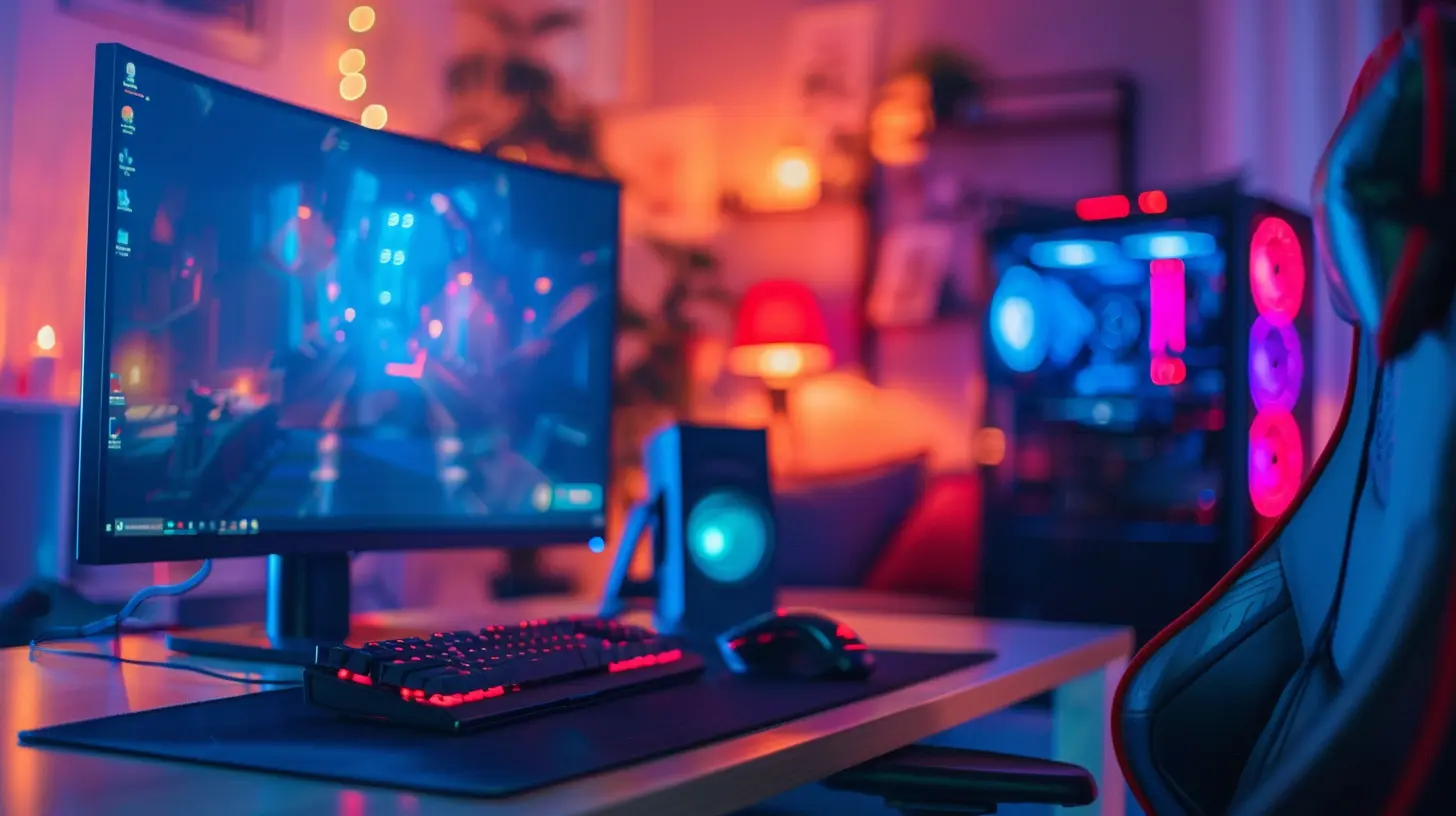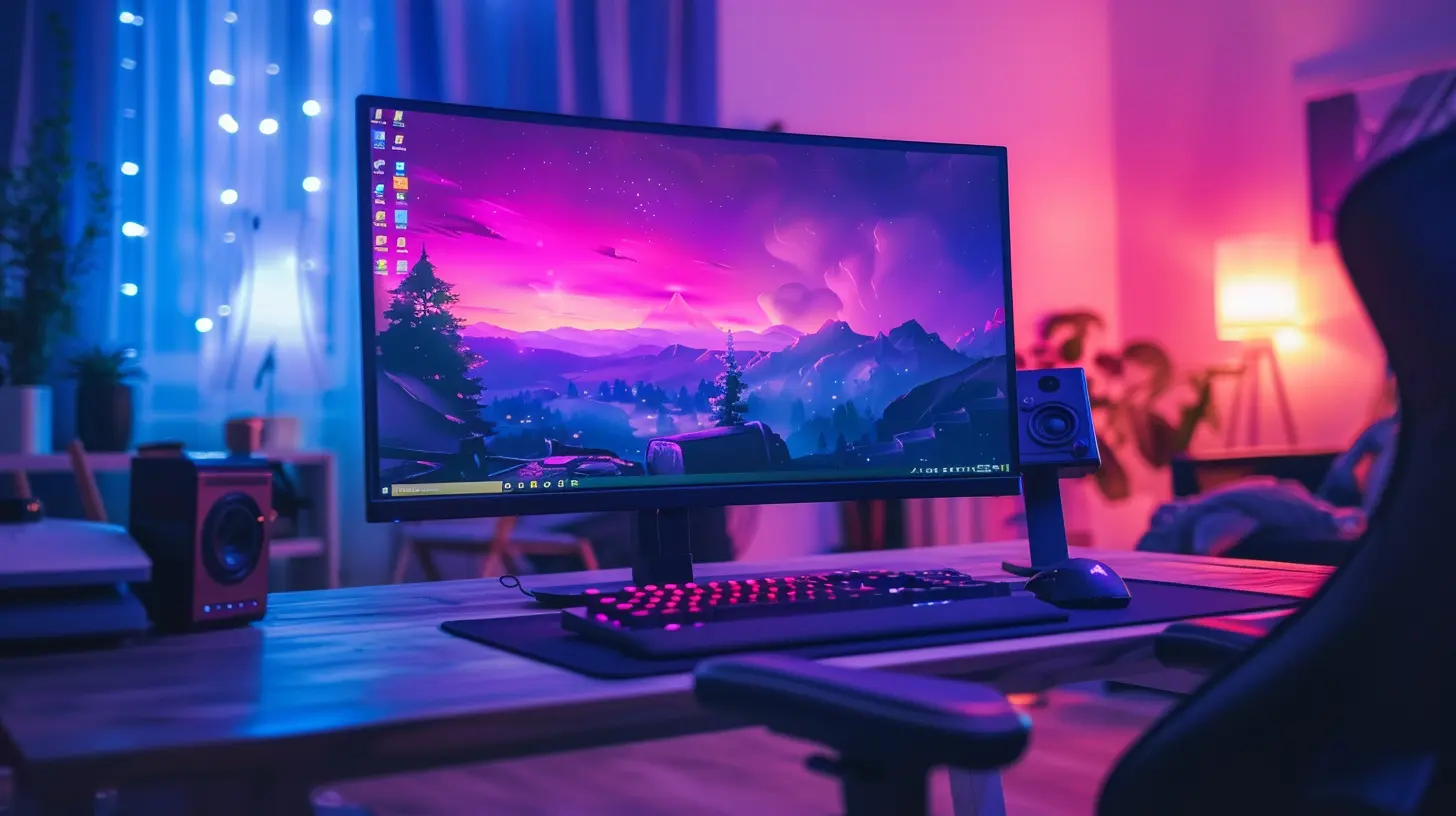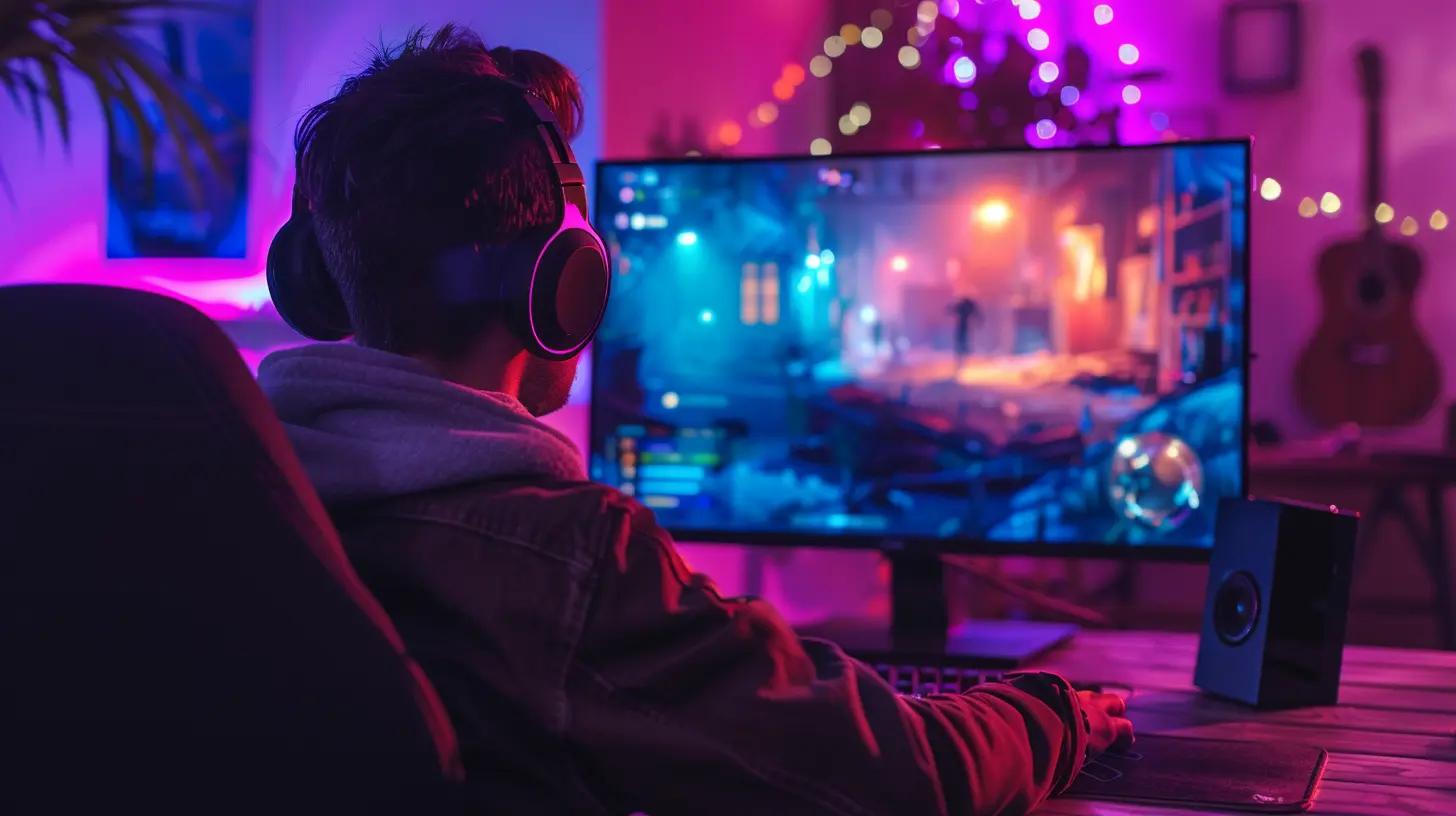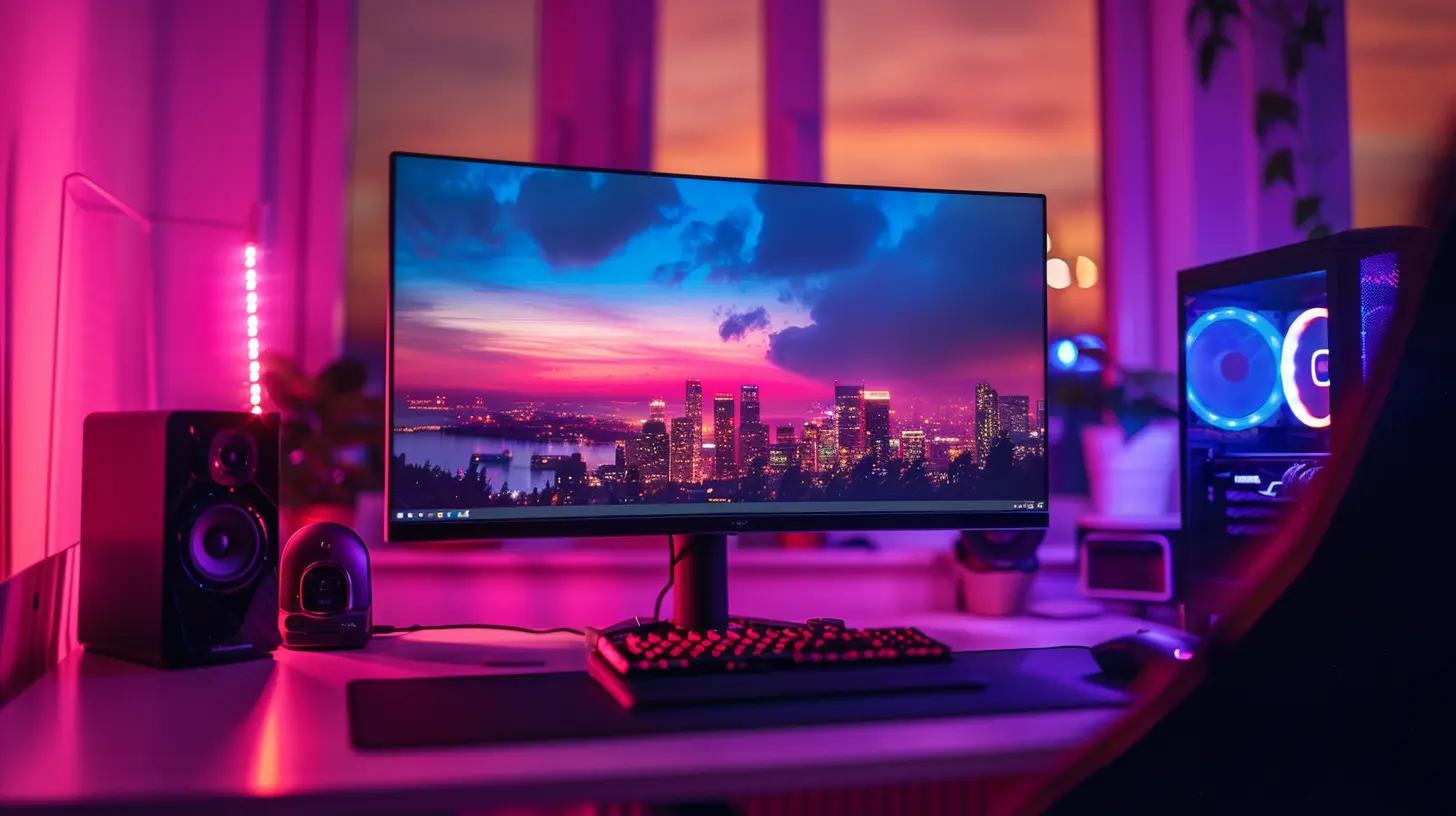Best Screen Sizes for Immersive Gaming Experiences
2 August 2025
Let’s be real: size matters—at least when it comes to your gaming screen. Whether you're diving into the chaotic battlegrounds of Call of Duty or wandering the open world of Elden Ring, the size of your screen can make or break your experience. You want every explosion, every shadow, and every tiny detail to pop off the screen like it's happening right in front of you.
But what is the “perfect” screen size for an immersive gaming experience? It's a question that often sparks heated debates in gaming communities. In this article, we're going to break it all down for you—comparing screen sizes for different types of gaming setups, preferences, and budgets.
So buckle up, adjust your monitor arm, and let’s jump into it.
Why Screen Size Matters in Gaming
Before you rush to your nearest electronics store or hit that buy button online, let’s first understand why screen size even matters.A bigger screen doesn’t automatically mean a better gaming experience. It’s about what feels right for your eyes, your space, and the kind of games you play.
Here’s the deal: bigger screens offer more visual real estate, which is fantastic for open-world games and immersive storytelling. But they can also be overwhelming if you’re sitting too close. On the flip side, smaller screens tend to be sharper (hello, better pixel density) and more responsive.
It all comes down to striking the perfect balance.
The Psychology of Immersion
Let’s get a bit nerdy for a second. Immersion in gaming is that magic moment when you forget you're even in your room—you're just “in” the game. Screen size plays a huge role in this. The closer and larger the screen appears in your field of view, the more your brain gets tricked into thinking you’re somewhere else.Think of it like this: watching a movie on your phone vs. watching it on a theater screen. One’s a casual glance; the other’s a full-body experience.
Key Factors When Choosing Screen Size for Gaming
Before we dive into specific screen sizes, let’s touch on a few key things you should factor in before making a decision:- Viewing Distance: How far will you be from the screen? A 65-inch TV is amazing... if you're sitting at least six feet away.
- Desk Space: That ultra-wide 49-inch monitor sounds dreamy until you realize it takes up your entire desk.
- Game Type: FPS, racing, MOBAs, and RPGs all have different screen size sweet spots.
- Resolution: A 32-inch 1080p monitor? Meh. A 32-inch 4K screen? Chef's kiss.
- Field of View (FOV): Bigger screens (especially ultra-wides) can literally show you more in-game, giving you a tactical advantage.
Best Screen Sizes for PC Gaming
Let’s kick things off with the PC crowd—after all, you folks are living in the golden age of customizable gaming setups.24 to 27 Inches – The Esports Sweet Spot
If you’re big into competitive gaming—think Valorant, Overwatch, Counter-Strike—then a 24" to 27" screen is your golden zone.Why?
- High refresh rates (144Hz or even 240Hz) are easier to find in this size range.
- Less head movement means quicker reaction times.
- The entire screen is within your peripheral vision, so you don’t have to move your eyes constantly.
Bonus: These monitors are more affordable and fit better on compact desks.
32 Inches – The Balanced Beast
This is where we step into “immersion” territory without going full-on cinema mode. A 32" gaming monitor gives you that extra space to fully appreciate textures, environments, and animations.Best for:
- Single-player story-driven games (God of War, Cyberpunk 2077)
- Casual multiplayer titles
- Sim racing, flight simulators
But here's the kicker—make sure you’re running a 1440p (2K) or 4K resolution. Anything less and you're going to see those pixels screaming.
Best Screen Sizes for Console Gaming
Console gamers, I see you lounging on the couch with your controller in hand. Your needs are a bit different.40 to 55 Inches – The Couch Kings
This is the dominant range for console gamers, especially those rocking a PS5 or Xbox Series X.Why it works:
- You’re sitting farther back, so a larger screen fills your view without overwhelming you.
- Most modern TVs in this range support 4K HDR with HDMI 2.1—perfect for next-gen consoles.
- Great for split-screen couch co-op. (Yes, that still exists!)
Pro tip: For optimal immersion, aim for a 55-inch 4K TV if your room allows it. Fire up Horizon Forbidden West on it, and you’ll literally feel like you're in another world.
65 Inches and Above – The Cinematic Experience
If you've got the room and the budget, go big or go home. Massive TV screens are amazing for:- RPGs and open-world games
- Racing games with a steering wheel setup
- Party games—because everyone gets a massive corner
But there’s a trade-off: You need to sit at least 8-10 feet away to really enjoy it. Otherwise, you’ll be darting your eyes around like you’re watching a tennis match.
Ultrawide Monitors – A Gamer's Cheat Code?
Ever tried gaming on an ultrawide monitor? It’s like stepping into another dimension. Usually sitting at 34 to 49 inches, these monitors wrap around your vision and make everything feel more “real.”They're fantastic for:
- Flight simulators (Microsoft Flight Sim, anyone?)
- Racing games (Forza Horizon looks stunning)
- Strategy and city-building games (more space means better management)
Just be warned:
- Not all games support ultrawide resolutions natively.
- You'll need a beefy GPU to drive those extra pixels.
Curved vs Flat Monitors – Does It Affect Immersion?
Short answer: Yeah, it kinda does.Curved screens (especially on ultrawides) help the image “wrap” around your field of view, which makes things feel a bit more 3D and less flat. It's like the difference between looking at a painting and stepping into a virtual mural.
Ideal for:
- Gamers who sit close to larger displays (32”+)
- Multi-monitor setups
If you’re rocking a smaller screen or sit far away, a curved display might not make much of a difference.
Resolution + Screen Size = The Ultimate Combo
Size is just part of the puzzle. You also need to line it up with the right resolution.Here’s a quick cheat sheet:
| Screen Size | Best Resolution | Why It Works |
|-------------|------------------------|---------------------------------------------|
| 24"–27" | 1080p / 1440p | Balanced pixel density and performance |
| 28"–32" | 1440p / 4K | Great detail without performance drop |
| 40"–55" | 4K UHD | Ideal for couch gaming |
| 65"+ | 4K UHD or higher | True theater-quality immersion |
| Ultrawide | 3440x1440 / 5120x1440 | More horizontal space = More immersion |
Pro tip: Pixel density matters. A massive 1080p screen is going to look… well, pretty pixelated. Don't do that to your eyes.
Portable Gaming Screens – Small But Mighty
Let’s not forget the portable gamers—Switch fans, Steam Deck users, mobile gaming warriors. You folks are working with 6" to 13" screens, but that doesn’t mean the immersion has to suck.Here’s how to make the most of it:
- Use headphones to boost audio immersion.
- Play in darker environments to eliminate distractions.
- Use screen magnifiers or dock to a larger display when possible.
Virtual Reality: The Ultimate "Screen"
Now, let’s talk about the future. Or should I say... the present?VR headsets don’t have a screen you see from a distance. They strap it right to your face. Talk about immersion! It doesn’t get more “in the game” than that.
Whether it’s Meta Quest, Valve Index, or PS VR2—VR redefines what it means to be surrounded by the game. No screen size debate needed. You’re literally inside the game world.
Final Thoughts: So, What’s the Best Screen Size?
Alright, let’s wrap it up. There’s no “one-size-fits-all” answer here. It all depends on your setup, game type, and what kind of experience you want.Here’s a quick TL;DR for the impatient:
- On a desk, go 24-32 inches with a solid resolution.
- On a couch, aim for 40-55 inches for console gaming.
- Feeling fancy? Go ultrawide or VR for total immersion.
And remember—don’t chase size just for bragging rights. Choose what feels right, looks amazing, and fits your gaming lifestyle.
Game on
all images in this post were generated using AI tools
Category:
Gaming MonitorsAuthor:

Avril McDowney
Discussion
rate this article
1 comments
Ivan Baxter
Great insights! The right screen size truly enhances immersion and elevates the gaming experience.
August 17, 2025 at 3:33 PM

Avril McDowney
Thank you! I completely agree—screen size plays a crucial role in creating an immersive gaming environment.


